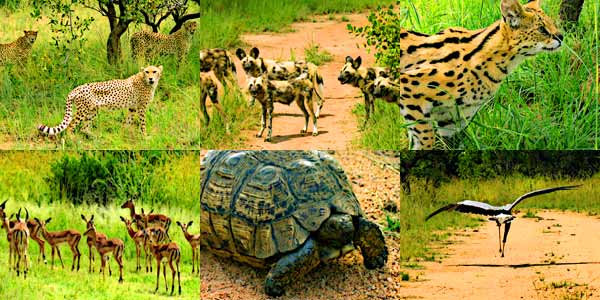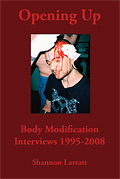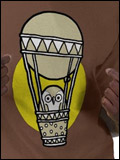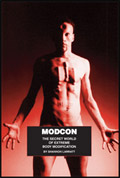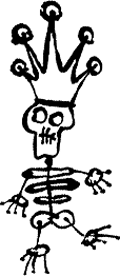Another day, another another three airports… Took off at about one from Windhoek, Namibia (left photo), and then landed at Johannesburg, South Africa (right photo), and eventually made it to Durban on the west coast of South Africa, at the southern end of Zulu territory. Some people have told me I may meet others with stretched lobes here, but I'm not keeping my fingers too crossed on it.


Flying in South Africa so far has been some of the most turbulent flying I've ever been through — many of the landings have been at very high speed, coming in fast and hard to minimize the chances of stalling I imagine. It's probably a great place to become a confident pilot (or dead). On
South African Airlines they use steel silverware when the serve the in-flight meals… Rachel looked at me, holding a metal knife in her hand, with sort of a
“holy crap, what have they given us?” look on her face — I told her we'd now have to hijack the plane to prove that American-style
“let's use dull plastic” security is a good precaution.


Durban is very pretty from above, incredibly lush and green, but very industrial as well with a lot of refineries and processing plants (immense sugar refineries and so on). I wasn't able to get a lot of pictures of it because it was dark by the time we left the airport, but here are two photos taken as we were coming in for landing, the first of the beach, and the second of one of the harbors.


From the airport Rachel called a couple hotels to see who could provide us with highspeed Internet service in the rooms — I've got mail piling up and need to download it, and don't really want to have to sit in a business center for eight hours… The
Sun International hotels (like the
Kalahari Sands where we stayed in Windhoek) were charging R1.20 per
minute (about $12 US an hour) for access about twice as quick as dial-up, so I wasn't looking forward to the bill to grab my huge bucket of bits.
Anyway, via a truly maniacal cab driver who drove a hundred and fifty kilometers an hour and ran at least five red lights, we made it to the Holiday Inn right on the beach… unfortunately what they'd told us on the phone wasn't quite right and they only had a business center, and nothing in the rooms… So off to the very swank Durban Hilton, or, as I like to call it, the church (sorry, ///, in-joke) in “Bobby's Cab”, a little car with broken doors and a collapsed window.


The left photo is their SuSE/KDE system booting up — a massive thunderstorm had taken their power grid out. I had to stand in line for quite a while with some unsavory
Geologistics economic-hitman mining executives (a bunch of already-way-too-rich white guys here to steal the local resources and screw over and drive into debt the native population in the process) because the check-in system was being run manually. Luckily, Internet use here is only R130 for 24 hours (a
lot cheaper than anywhere else we've been — about $0.90 per hour).
That said, so far, at very much at first glance, Durban is my favorite of the cities we've been to here in Africa , and seems the most diverse, with a heavy South East Asian (Indian, or perhaps from Madagascar?) population… Well, I've got some work to do but assuming the connection stays solid you'll hear a better report on the city tomorrow, and if the speed tests look good I'll do an image update as well.




















